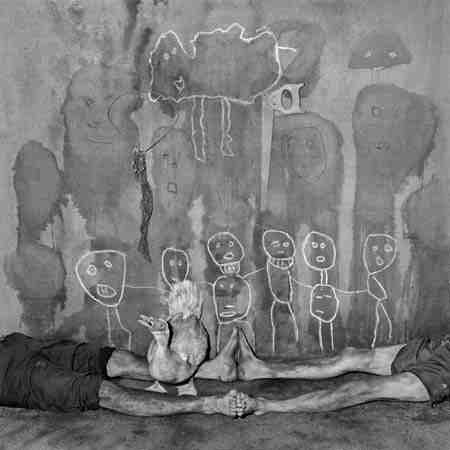One knock for the clown

Up until the publication of my first book this spring, I recoiled at the prospect of giving readings and rarely did — not only out of a universal shyness at public speaking, but also, and moreso, from the acute sense that reading my poems aloud didn’t represent them right and that, without too much conceptual work or production, you could make simple machines of performance that could, as poet David Buuck says through these great thin walls of J2, “activate manifold potentialities in the work, such that each reading is both an interpretation as well as a further investigation into how the poem ‘means’.” Going on a book tour with my publishers and their own new books of poems motivated me to develop and try out alternatives to poetry readings, and to report back on selected performances here, with description and documentation in the style of High Performance or our contemporary incarnation of it, Ugly Duckling Presse’s Emergency Index.
Much inspiration for these performances comes out of studying rituals and liturgy of other cultural and spiritual traditions in which poetry is paramount, and particularly from the time I spent as a student at the San Francisco Zen Center. But it also comes from those artists whose poetics of performance, regardless of discipline or medium, have been especially meaningful to me: The Fluxus and Regietheatre last works of Christoph Schlingensief, but also his first, My 1. Movie, made at age 7; Klaus Nomi’s new wave opera covers of Donna Summers and Henry Purcell; Marina Abramovic and Ulay’s The Lovers-The Great Wall Walk; the mythologizing and ritual-driven work of Matthew Barney, Joseph Beuys and Yayoi Kusama; John Cage’s radical turning of his Buddhist practice into the avant-garde of American music. The line of influential artists is longer, of course-- partly because when I say poetics of “performance,” I don’t necessarily always mean something staged as such; sometimes it is an anecdote from the artist’s life, the unconscious, inevitable quality of which suggests her art and life, if seeming so only for that moment or episode, were one and the same and inextricable. For example, just knowing how Joseph Cornell's boxes, primarily gifts, were miniatures of an idolatry of such magnitude that made accepting them, let alone reciprocation, impossible. That even in his youth, already a serious eagle and master of crush-work, the simple gesture of presenting a bouquet of flowers to a movie-theatre attendant so frightened the attendant that she called the police.
In the months to come, each post I write here will focus on one particular performance, share documentation as well as a brief description of its conceptual origins, context and responses. These will include, among others, a chance-driven mass-chant modeled on Buddhist liturgy for The Diamond Sutra; an oracular enclosure or — by its street name — poetry glory holes, which used my poems for rhapsodomancy; invented rituals and sets constructed using symbolism from poems written in friend-coded language, resulting in invitations like, Please, this way, through the giant and sequined marshmallow labyrinth.
One knock for the clown